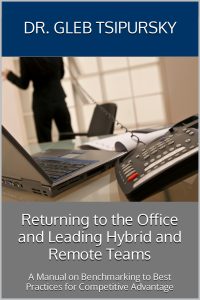Effective Gen AI adoption relies on tracking AI skills development. Data-driven learning, personalized training, and real-world metrics ensure employees confidently apply Gen AI to drive measurable business impact.
Regular, collaborative check-ins help leaders navigate AI disruption by aligning teams, fostering psychological safety, and driving continuous improvement—turning Gen AI experimentation into real business results.
AI agent building turns passive learning into practical skill-building, helping associations boost member capability, deepen engagement, and unlock new revenue opportunities through hands-on, coached innovation.
Robust Gen AI feedback loops—through surveys, workshops, and real-time tools—empower associations to refine AI solutions, boost adoption, and drive member and volunteer engagement.
Remote work expands opportunity and economic stability for older workers with disabilities, removing barriers and helping them stay employed longer in an inclusive, flexible labor market.
Gen AI innovation thrives when associations recognize and reward staff and volunteers, motivating them to contribute ideas, embrace new tools, and drive meaningful transformation across the organization.
Constant remote work requests signal a disconnect. Listening to employee needs through surveys and conversations is key to building trust, boosting morale, and shaping a policy that truly works for everyone.
AI workslop drains association trust and productivity, but co-creation and staff empowerment transform AI from shallow output into reliable, member-focused tools that strengthen engagement and value.
Cross-functional collaboration is essential for Gen AI excellence, ensuring diverse perspectives guide implementation, reduce resistance, and create high-impact, mission-aligned results for associations.
True success in Gen AI initiatives comes not from competition but from collaboration: breaking down silos, sharing insights, and working together to unlock innovation, agility, and lasting organizational value.
For associations, association Gen AI potential lies not just in its capabilities but in how it’s embraced by people. By empowering champions to lead the way, associations can foster trust, collaboration, and enthusiasm, driving meaningful change and ensuring the organization’s mission remains at the forefront in an increasingly digital world.
Embracing failure is essential to a successful AI strategy. It’s not a setback but a catalyst for learning, innovation, and resilience that drives continuous improvement and real business impact in the evolving world of generative AI.
Myth-busting Gen AI shows that with education, transparency, and early wins, associations can replace fear with confidence—empowering staff, volunteers, and members to see AI as a partner in advancing their mission, not a threat.
Sustained AI innovation thrives when businesses invest time, tools, and support to empower experimentation—transforming curiosity into scalable impact and positioning organizations to lead in an evolving, Gen AI–driven future.
The Gen AI promise for associations lies in fostering a learning culture where leaders, staff, and volunteers align strategy, collaboration, and innovation to drive member value, adaptability, and long-term success.
Flexible work will thrive through empowerment, not office layouts. DIY AI—where employees build their own tools—turns flexibility into performance, boosting productivity, balance, and innovation across distributed teams.
Associations that empower members and staff to create intelligent tools—embracing the association build the AI mindset—will transform member engagement, boost retention, and gain a lasting competitive edge in the digital era.
AI fails when goals are unclear—success comes from aligning Gen AI with business priorities, setting measurable outcomes, and balancing structure with flexibility to turn innovation into impact.
Engagement drives success in your Gen AI learning strategy. When staff and volunteers are invested, they turn training into innovation, modeling the culture of continuous learning that powers stronger missions and member impact.
Organizations are moving from DEI to data-driven decision-making, embedding fairness and transparency into everyday processes to reduce bias, build trust, and drive innovation without the political baggage of traditional DEI.
Regular, well-structured check-ins are essential for navigating gen AI disruption, ensuring alignment, fostering innovation, and driving continuous improvement while empowering teams to deliver lasting member value.
Gen AI workshops turn theory into action by immersing employees in real-world problem-solving, building confidence, sparking innovation, and driving results through hands-on learning.
Can Gen AI drive your communications staff to one? Explore the new human roles required to protect brand integrity from AI risks.
AI-accelerated work boosts productivity and quality by over 40%, proving that human-AI collaboration can transform knowledge work if organizations balance adoption with ethical oversight and smart navigation of AI’s limits.
Clear objectives prevent costly Gen AI fails. Aligning projects with mission, fostering experimentation, and measuring impact ensures Gen AI drives real member value and sustainable growth.
Protect yourself from decision disasters by getting our free Wise Decision Maker Course, which includes 8 weekly video-based modules. As a bonus, you'll receive a free copy of our Assessment on Dangerous Judgment Errors in the Workplace when you sign up.
































